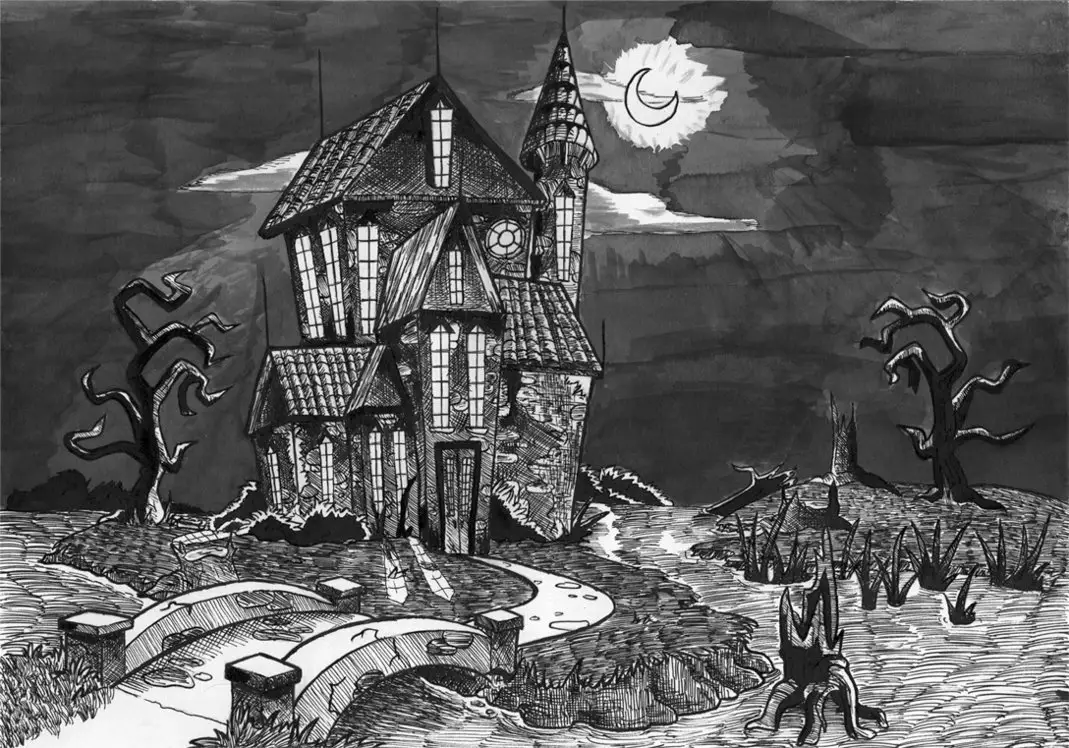Gothic Horror
American Gothic Horror 1800s

Gothic fiction emerged in England with the 1764 novel The Castle of Otranto by Horace Walpole. It combines horror, death, and romance, serving as an extension of the Romantic literary movement.
When this literary genre arrived in America, it took its own form as a subgenre. Elements such as puritanism, guilt, monsters, and ghosts became the distinctive characteristics that have made it beloved to many readers throughout the years.
Facts about American Gothic Horror
- Edgar Allan Poe is referred to as the Father of Gothic Literature in America.
- Bram Stoker’s Dracula is an American Gothic novel from the Victorian Era.
- Robert Louis Stevenson’s The Strange Case of Dr. Jekyll and Mr. Hyde was published in 1886.
- A popular painting of American Gothic by Grant Wood in the 1930s is a reference to the impact of this type of literature in society.
- The origin of the word Gothic for this style of horror writing is the subtitle A Gothic Storythat was added by Horace Walpole in the first gothic horror novel. It was supposed to mean something that is barbaric or hailing from the Middle Ages.
- Hel, shaming, guilt, and other images of puritanism became important literary devices in American gothic horror. This is apparent in stories such as The Scarlet Letter, Young Goodman Brown and The Pit and the Pendulum.
Castle corridors and dungeons were trademarks of European Gothic horror. Its American counterpart diverted from this tradition and conquered the vastness and emptiness of the outdoors. The prevalent fears of their generation involved unexplored locations, and this can be seen in works such as Edgar Huntly by Brockden Brown.
Another unique aspect of the American Gothic horror is the ab-human. It is an offshoot of Charles Darwin’s concepts on species evolution and describes an existence that is very far away from a normal human. This is apparent in stories such as The Outsider by H.P. Lovecraft and Subsoil by Nicholas Baker. Characters such as monsters and ghosts are a notable usage of ab-humans.
The early stages of American Gothic focused on the wilderness of terrain and the anxiety of the unknown. The Legend of Sleepy Hollow by Washington Irving is a prominent example of American Gothic fiction in the American colonial era, with its important character, the headless horseman.
Other important pioneers of American Gothic are Edgar Allan Poe and Nathaniel Hawthorne with his explorations of the Salem Witch Trials in The Custom House.
An offshoot of the 1860s Civil War was the Southern American Gothic, and its incursions in the economic and societal decay of the war’s aftermath. Instead of European castles, there are plantation estates, with a focus on racial and class issues. Authors such as Flannery O’Connor, Eudora Welty, and William Faulkner made their mark under this style.
The New American Gothic is the style of writing that made J.D. Salinger and John Hawkes popular authors. They create exotic private worlds to brandish their Gothic storytelling. Contrary to the early American Gothic that created terror in unknown territories, the setting here is the psyche of the characters. Stories such as The Laughing Man, The Lime Twig, and The Beetle Leg and Wise Blood are examples of these.
What is considered the first gothic novel?
It was The Castle of Otranto by Horace Walpole in 1764.
What is a type of character in American Gothic that refers to something that is beyond human existence?
It is the literary device called the ab-human, perpetrated by examples such as ghosts and monsters.
Who wrote The Legend of Sleepy Hollow?
It was Washington Irving, about a supernatural tale during the American colonial era.
Nathaniel Hawthorne’s The Custom House discusses what historical event?
It talked about the Salem Witch Trials.



